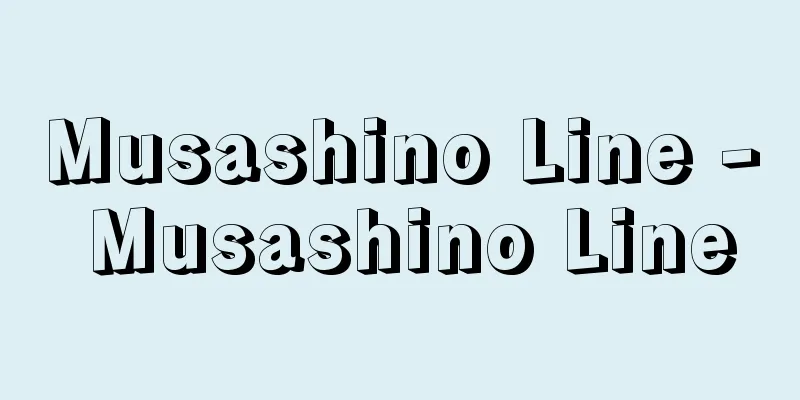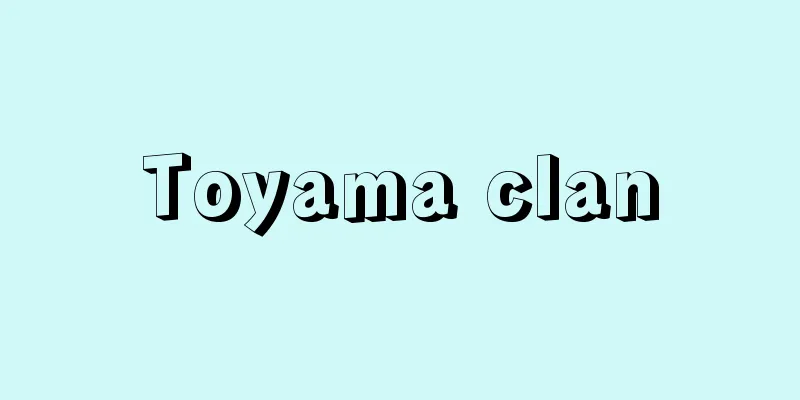Musashino Line - Musashino Line

|
The name of the East Japan Railway Company's track. It consists of 100.6 km of Tsurumi (Kanagawa Prefecture) - Fuchu Honmachi (Tokyo) - Nishi-Urawa (Saitama Prefecture) - Shin-Matsudo (Chiba Prefecture) - Nishi-Funabashi (Chiba Prefecture), and 4.9 km of Nishi-Urawa - Yono in Saitama Prefecture. The entire line is double tracked and DC electrified. It is the Tokyo Outer Circular Line, which connects the main railways that converge radially around Tokyo, and was originally built to bypass the main line freight trains that had previously used the Yamanote Freight Line. It opened as a Japanese National Railways line from 1973 to 1978 (Showa 48-53), and, together with the existing Tsurumi-Shin-Tsurumi marshalling yard, it connected the Tokaido, Chuo, Tohoku, Joban, and Sobu lines, completing a railway that circles almost three-quarters of the Tokyo area, greatly changing the freight train operation system around Tokyo. There are three freight terminals at Kajigaya, Niiza, and Koshigaya, which were planned to be linked to Musashino Marshalling Yard (between Yoshikawa and Misato), the most modernized in Japan, and distribution terminals, and it was hoped that these would function well, but with a nationwide decline in rail freight, Musashino Marshalling Yard was abolished, and the Musashino Line also gradually changed from a freight-oriented railway to one that prioritized passenger transport. As the section between Tsurumi and Fuchu-Honmachi runs almost parallel to the existing Nambu Line, only freight trains are operated there, with the exception of some special trains. Meanwhile, only passenger service is available between Shin-Matsudo and Nishi-Funabashi. Following the privatization of Japanese National Railways in 1987, the line became part of East Japan Railway Company. In 1990, direct service to the Keiyo Line began, with trains running between Fuchu-Honmachi and Nishi-Funabashi, and then onto the Keiyo Line, providing direct service to Tokyo and Minami-Funabashi. The Seibu Railway section between Ikebukuro and Agano was originally a Musashino Railway line and was called the Musashino Line, but has now been renamed the Ikebukuro Line. [Eiichi Aoki and Ryo Aoki] Source: Shogakukan Encyclopedia Nipponica About Encyclopedia Nipponica Information | Legend |
|
東日本旅客鉄道の線路名称。鶴見(神奈川県)―府中本町(ほんまち)(東京都)―西浦和(埼玉県)―新松戸(千葉県)―西船橋(千葉県)間100.6キロメートル、埼玉県の西浦和―与野(よの)間4.9キロメートルよりなる。全線複線、直流電化。東京に放射状に集中する幹線鉄道を相互に結ぶ東京外環状線で、当初は従来山手貨物線を利用していた幹線相互連絡の貨物列車をバイパスさせる目的で建設された。1973~1978年(昭和48~53)日本国有鉄道路線として開業し、既設の鶴見―新鶴見操車場間をあわせて、東海道、中央、東北、常磐(じょうばん)、総武各線を結び、東京周辺をほぼ4分の3周する鉄道が完成して東京付近の貨物列車の運行体系を大きく変えた。日本でもっとも近代化された武蔵野操車場(吉川(よしかわ)―三郷(みさと)間)や流通ターミナルと結び付く計画で設けられた梶ヶ谷(かじがや)、新座(にいざ)、越谷(こしがや)の三つの貨物ターミナルがあって、その機能の発揮が期待されたが、鉄道貨物の全国的退潮のなかで武蔵野操車場は廃止され、武蔵野線も貨物本位の鉄道からしだいに旅客輸送を重視した鉄道に変化した。鶴見―府中本町間は既設の南武線とほぼ並行するため、一部の臨時列車を除き、貨物列車のみが運転されている。一方、新松戸―西船橋間は旅客営業のみとなっている。1987年、国鉄の分割民営化に伴い、東日本旅客鉄道に所属。1990年(平成2)京葉線への直通運転が開始され、電車は府中本町―西船橋間、さらに京葉線に乗り入れ、東京、南船橋へ直通運転される。 なお、西武鉄道池袋―吾野(あがの)間はもと武蔵野鉄道の路線で武蔵野線の名称でよばれたが、現在は池袋線と改称されている。 [青木栄一・青木 亮] 出典 小学館 日本大百科全書(ニッポニカ)日本大百科全書(ニッポニカ)について 情報 | 凡例 |
<<: Musashi song - Musashiburi
Recommend
Hyakurihara
This plain is located in Ogawa Town, Higashiibarak...
Kijima Hajime
Poet, novelist, and American literature scholar. ...
peregrinus
…They were temporary hermits who left the protect...
Tadasuke Okubo - Ookubo Tadasuke
Year of death: September 27, 1613 (November 9, 161...
Thought - Shisou
〘Noun〙① (━suru) To have an idea in one's mind....
Tsushima Shrine
Located in Shinmei-cho, Tsushima City, Aichi Pref...
Dismantling the Movement - Sports Day
...When walking, the movements of the limbs are u...
Kasai Bayashi
This is a festival music tradition that is passed...
Gluta usita (English spelling)
...The main component of the sap is urushiol in t...
Promachus yesonicus (English spelling) Promachusyesonicus
...Most of them feed on plants. Promachus yesonic...
Le Breton, G. (English spelling) LeBretonG
…A palace associated with the French royal family...
Accountant - Kaikeisi
A person whose occupation is to audit or certify f...
Vesakha Festival - Vesakha Festival
In southern Buddhism, this festival is held to cel...
Rissho University
It is a private institution. Its founding dates b...
Montagu Chelmsford Report - Montagu Chelmsford Report
This report, officially called the Report of the I...









